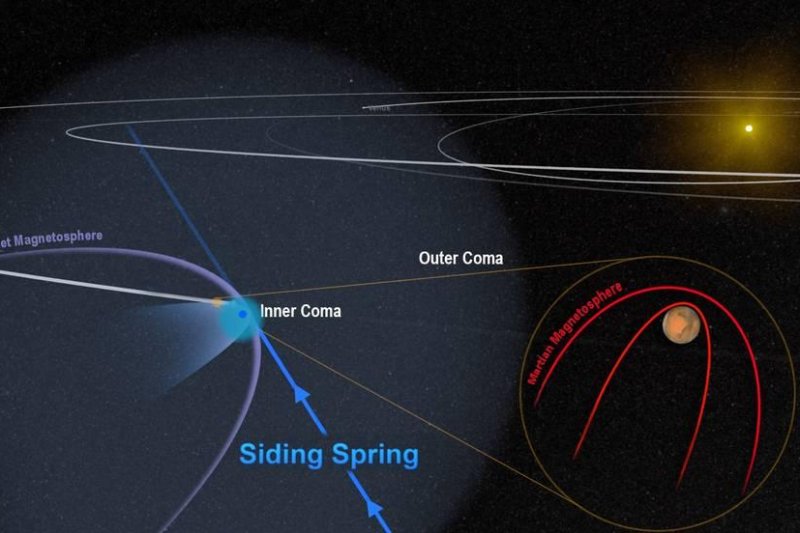GREENBELT, Md., March 10 (UPI) -- New research reveals the electromagnetic effects of Mars' 2014 near-miss encounter with comet C/2013 A1, or Siding Spring.
Data collected by the MAVEN probe's magnetometer suggest the flyby momentarily threw the Martian magnetosphere into chaos.















